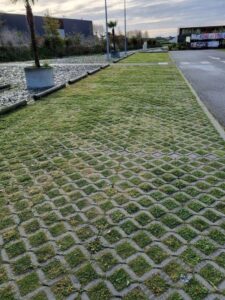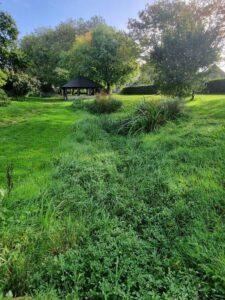
Revegetation: A case for green-blue infrastructure
By Patrick Regnault
Revegetation is the process of replanting vegetation and rebuilding the soil of disturbed land for the principal purpose of rehabilitating or protecting degraded land. Revegetation is used in many sectors of Australia, such as mining, farming, infrastructure, and urban centres. It is a big industry, employing thousands of people both directly and indirectly. It has led to advances in soil rehabilitation techniques, improvement in sustainable materials, and greater awareness of the danger of land degradation and the benefits to communities once the land is restored to a healthier state.
In Australia, over 80% of the population lives in urban and peri-urban centres, which places great pressure on the environment. Urban planning has been reactive rather than proactive, leading to sprawling housing with little thought about green and blue infrastructure (green – soft areas, plants and trees; blue – water courses, ponds, lakes, drainage). Historic soil contamination from past industries still affects our urban waterways.

In Australia, two-thirds of agricultural lands suffer from degradation due to soil erosion, salinity, acidity, and contamination. Past practices, some of which continue today, are contributing factors. The soil biome is now better understood, and there is a growing demand for education in regenerative agriculture and associated products.
When it comes to our towns and cities, the aforementioned problems should be seen as opportunities to develop new methods of planning and development in new land releases, and to retrofit our green-blue infrastructure wherever possible.
The need for liveable and climate-resilient cities is growing. To have a comprehensive working infrastructure of this type, it needs to be in the planning codes of each state and territory. The benefits in terms of health, welfare, and the environment will outweigh the original financial cost. It will have a positive effect on the economy and local job prospects.
On a house lot scale, it means looking at more greening around houses, rainwater retention, and biofiltration (rain gardens) before water leaves the property. It needs to be well planned on the streets to facilitate the installation, maintenance and repairs of services running under the pavement. Swales and roadside rain gardens help increase water infiltration and pollutant filtration. They make streets more attractive and citizens more responsible for their own contamination. The choice of plants, not just trees, needs careful consideration. At a suburban level, it feeds into green amenities using water to irrigate parks and sports fields. This kind of planned infrastructure can greatly help mitigate the effect of flooding via grassed detention basins and improved, or created, wetlands. With the high cost of floods to the economy, green-blue infrastructure is an investment. These basins and wetlands also reduce the amount of sediment entering and, over time, clogging our waterways.
As we increase our birds-eye view, we see the town or city, and the extensive network of natural open spaces, urban forests, waterways and lakes, harbours, and sea. Many urban rivers have lost their aquatic and riparian ecological value – one of the factors contributing to the negative effects of flooding.

The challenge is bringing together the grey-black and the blue-green infrastructure in a functioning integrated system. This is not new, nor is it impossible. There are many examples in the world, including Australia. What may be missing is a legislated approach and a clear framework. Educating the public, private sector, politicians and public servants is a necessity. In December 2022, the current government proposed a reform plan that addresses the value of green-blue infrastructure going forward: A Nature Positive Plan: Better for the environment, better for business. https://www.dcceew.gov.au/sites/default/files/documents/nature-positive-plan.pdf
Another hurdle for local councils is technical or financial capability. Councils have limited money and don’t always have the staff capacity to adapt to new approaches. That is where professional development comes into play.
Revegetating and greening towns and cities should be considered holistically. Urban vegetation is an asset, not a liability. Linked to water infrastructure, it offers immense social, economic, and environmental benefits.
As an industry, we have the knowledge and capacity to help implement those changes. Perhaps what we need is to create a space at the State and Federal levels to make a case for our industry’s involvement in green-blue infrastructure planning, and real change through concrete actions.
Patrick Regnault FAIH RH0062
Interactive Landscapes
E: patrickregnault@hotmail.com
